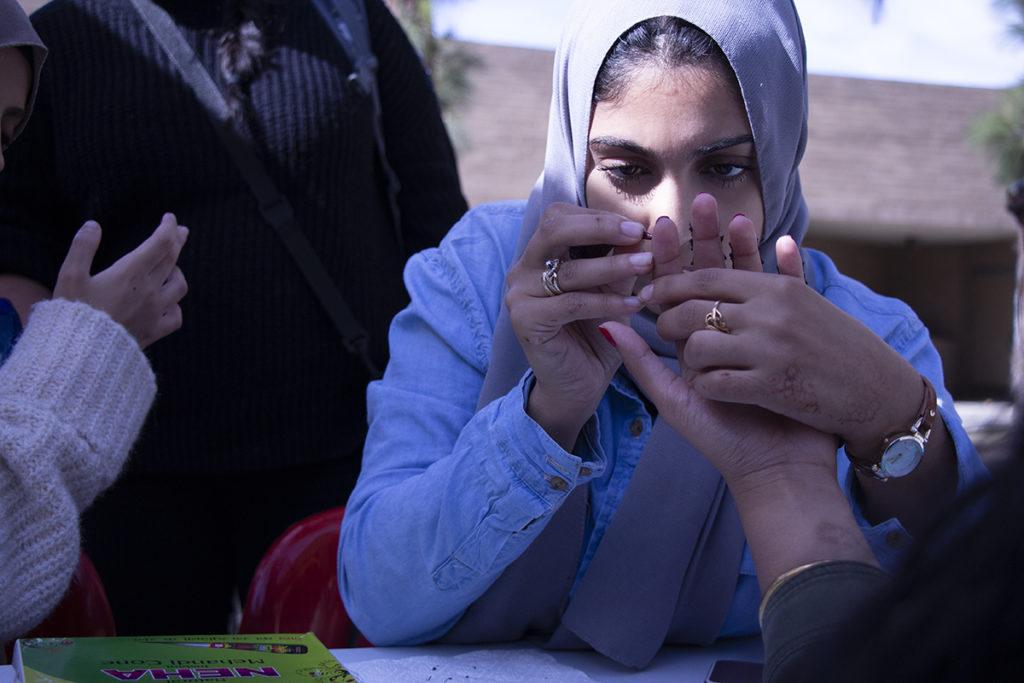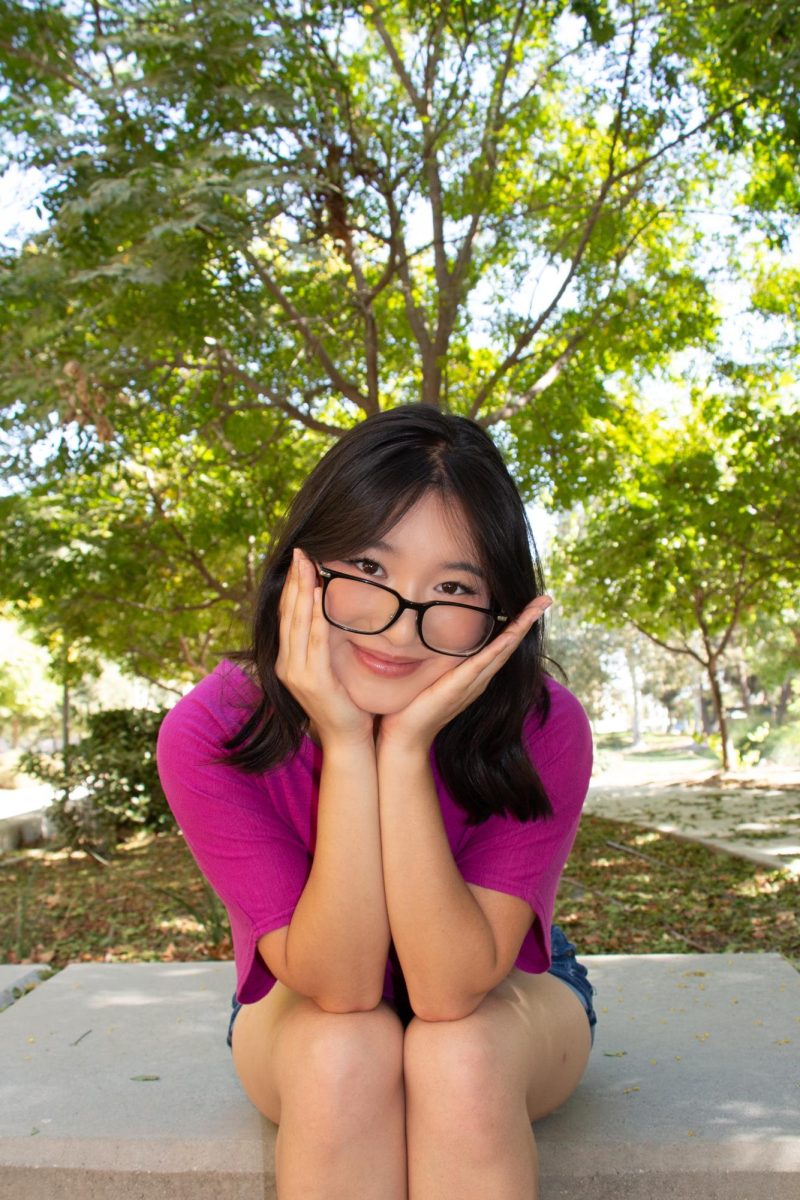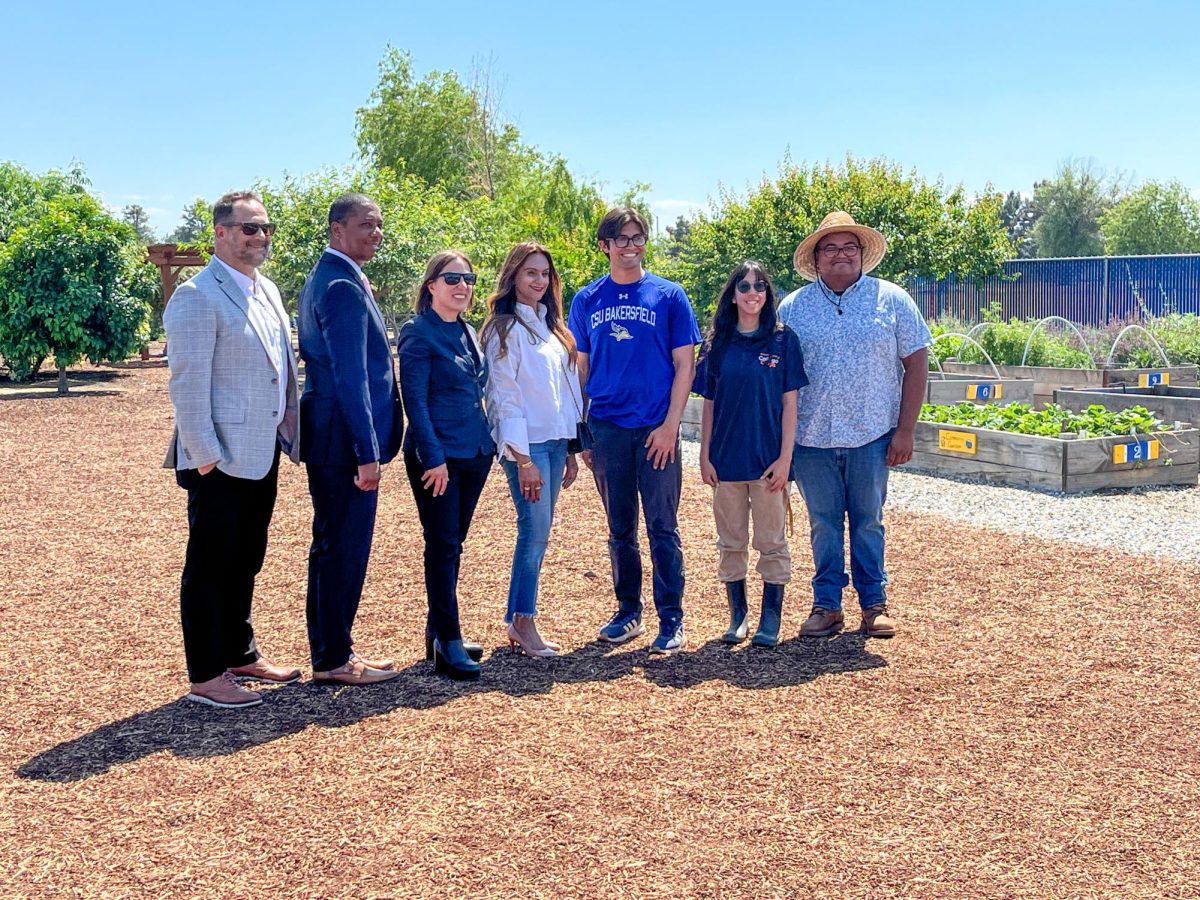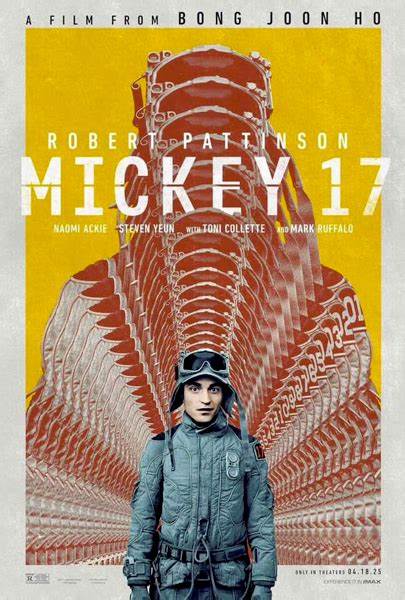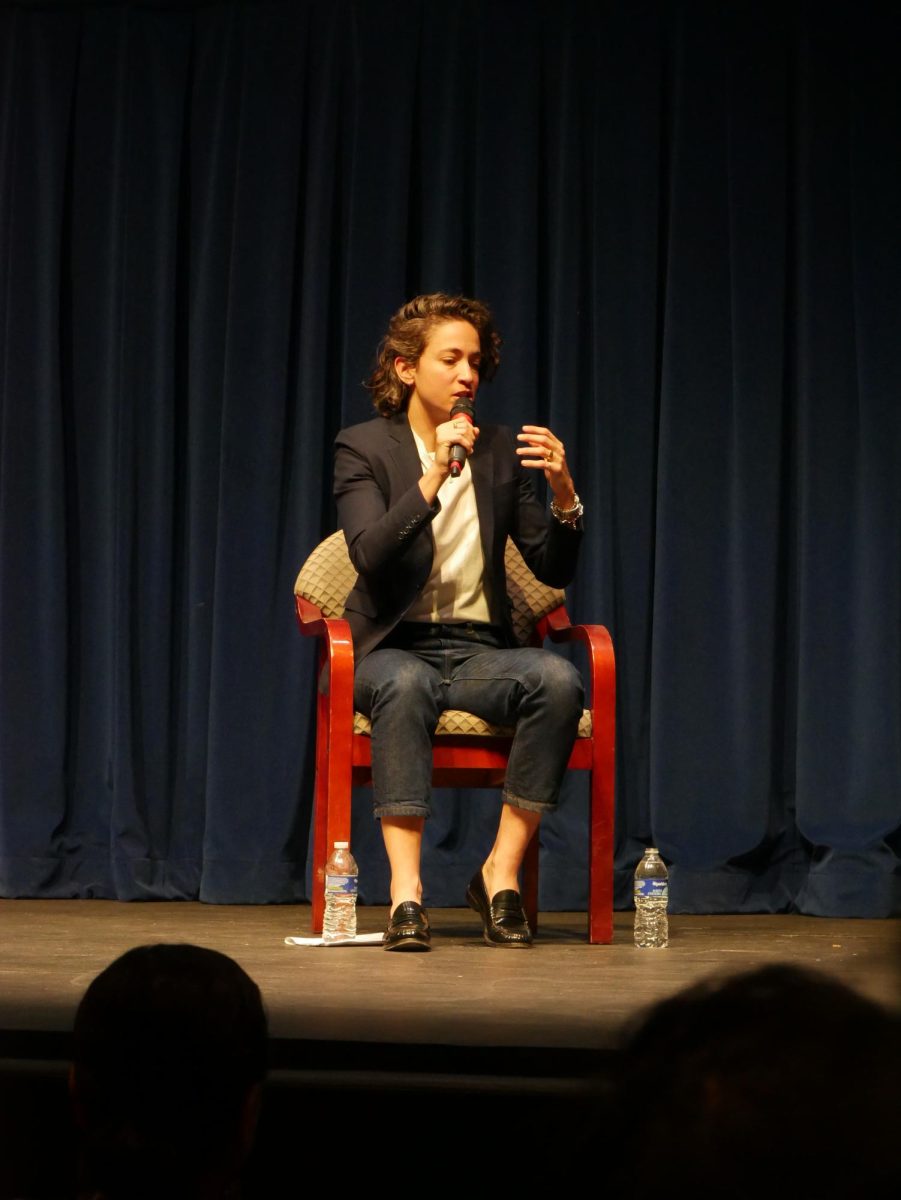Features Editor
California State University, Bakersfield’s Muslim Student Association have put a plan into action to challenge the negative stereotypes that sour the perception of those who practice Islam, one henna-tattooed hand at a time.
Sophomore sociology major and MSA president Hoda Huzaibi had all hands on deck as she created intricate designs through henna, prepared snacks to be sold, and regulated what was played through the speaker that blared out contemporary rap just in front of the Dorothy Donahue Hall.
“There’s a lot of stereotypes going around about Muslims,” Huzaibi said. “Our goal is to move people away from those stereotypes and show people what Muslims really are about.”
Often portrayed as the Middle Eastern villains in movies like Marvel’s 2008 “Iron Man” or stereotyped as strict and pious, what is left out of the picture is that Muslims are a diverse and joyous people.
Ranging in price from $1 to $15 for henna art, the proceeds from the Henna Fundraiser will be put toward the Diversity in Islam event.
“A lot of people tend to think that Muslims are mainly from the Middle East, but the event is to highlight that it’s diverse,” Huzaibi said. “There’s Hispanic people that are Muslims, there’s white people who are Muslims.”
On Nov. 13 from 5 to 7 p.m. the Diversity in Islam discussion will be held in the multipurpose room in the Student Union. Those who attend will listen to first hand experiences from Muslim panelists from differing backgrounds, as well as participate in a Question & Answers discussion.
The popularity and cultural importance of henna made it an easy choice when the club was deciding on what they should sell.
“There’s a lot of Muslim countries that do henna on weddings, and on celebrations or holidays,” Huzaibi said. “And we have a lot of talented people in our club who know how to do it.”
Huzaibi recalled her mother doing her henna for her since she was about five. She said that henna, in the Arab and Indian culture, symbolizes happiness and celebration.
“We put on henna in the significant and content moments of our lives,” Huzaibi said via email.
Henna comes from a plant that grows in the tropical climates of Africa and Southern Asia that contains a natural dying pigment. The staining quality of Henna has been used for at least a couple centuries for hair dye and temporary body art.
Depending on how detailed the henna is, it may take up to thirty minutes to design, then the drying period takes an additional ten to twenty minutes. Vaseline is then applied to enhance the color and can be wiped off in an hour or two. Before fully fading, the henna can last for up to a week and a half, or longer if properly cared for.
The table offered people a choice of stenciled or free-hand designs.
Senior business administration major Deanna Stilwell received her first henna tattoo during the Henna Fundraiser. The combination of a deer stenciled with henna and “little finger-tip designs” is what she chose as her introduction to the art.
“I kind of just came, looked at it, saw the prices and picked a stencil, and then looked online and put it together,” Stilwell said of her creative process.
Senior environmental research management major Nadim Ahmed sat underneath the Campus Programming provided canopy that protected the snacks the fundraiser had for sale.
“For food options, we’re offering Hot Cheetos and cheese and lemonade,” said Ahmed.
The Hot Cheetos with cheese cost $2 and the lemonade $1.
The Henna Fundraiser will continue on Monday through Wednesday in hopes of meeting its $350 goal.


